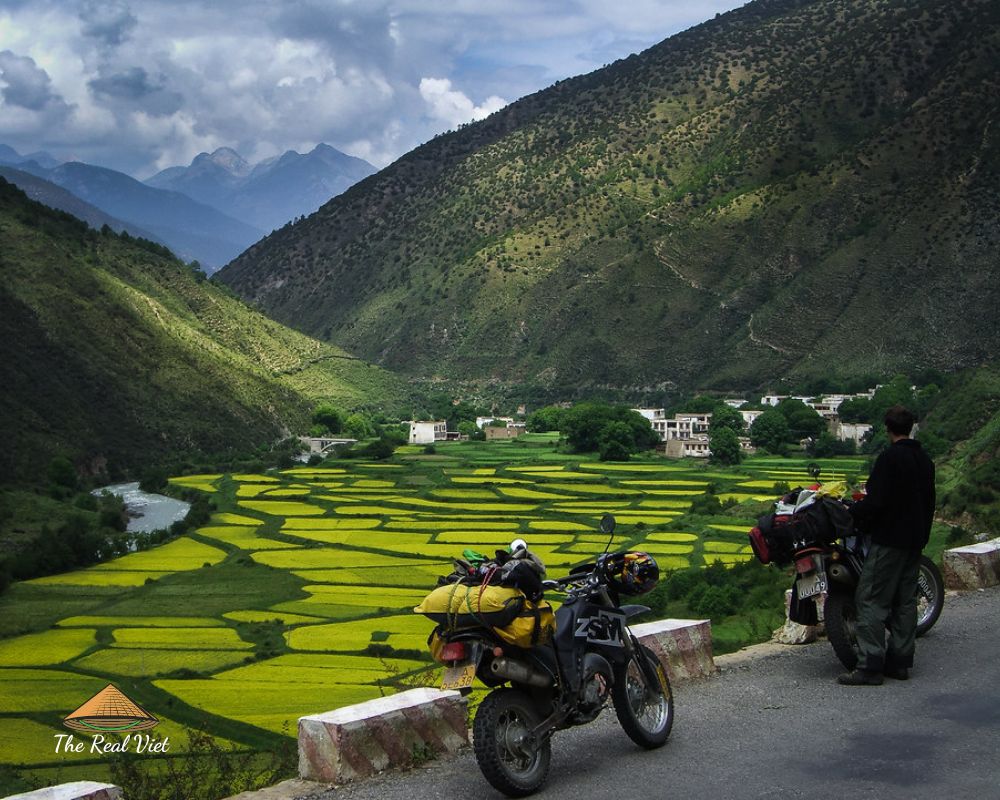Hey there, folks! It’s your friendly Da Nang weather reporter here to give you the latest scoop on what Mother Nature has in store for us. If you’re like most people around these parts, I’m sure you’ve got a hankering for some sunshine and warm temperatures. Well, let me tell ya – we’ve got just that and more!
Da Nang is known for its tropical climate, which means it can get pretty hot and humid around here. But don’t worry – we’ve also got plenty of refreshing sea breezes to keep things comfortable.

And if you’re looking to cool off even more, why not take a dip in our beautiful beaches? With crystal-clear waters and soft sand underfoot, it’s no wonder tourists flock to this city year-round.
So sit back, relax, and let me guide you through all the ins and outs of Da Nang weather – because trust me when I say there’s never a dull moment around here!
Weather in Da Nang
Average Temperatures
Hey there, weather enthusiasts! It’s time to dive into the temperature trends of Da Nang. Located in central Vietnam, this city is known for its hot and humid climate throughout the year.
The average temperatures range from 27°C (81°F) to 34°C (93°F), with seasonal variations that can be felt by locals and tourists alike. During the summer months of June through August, temperatures soar to their highest point, making it a popular destination for beach-goers.
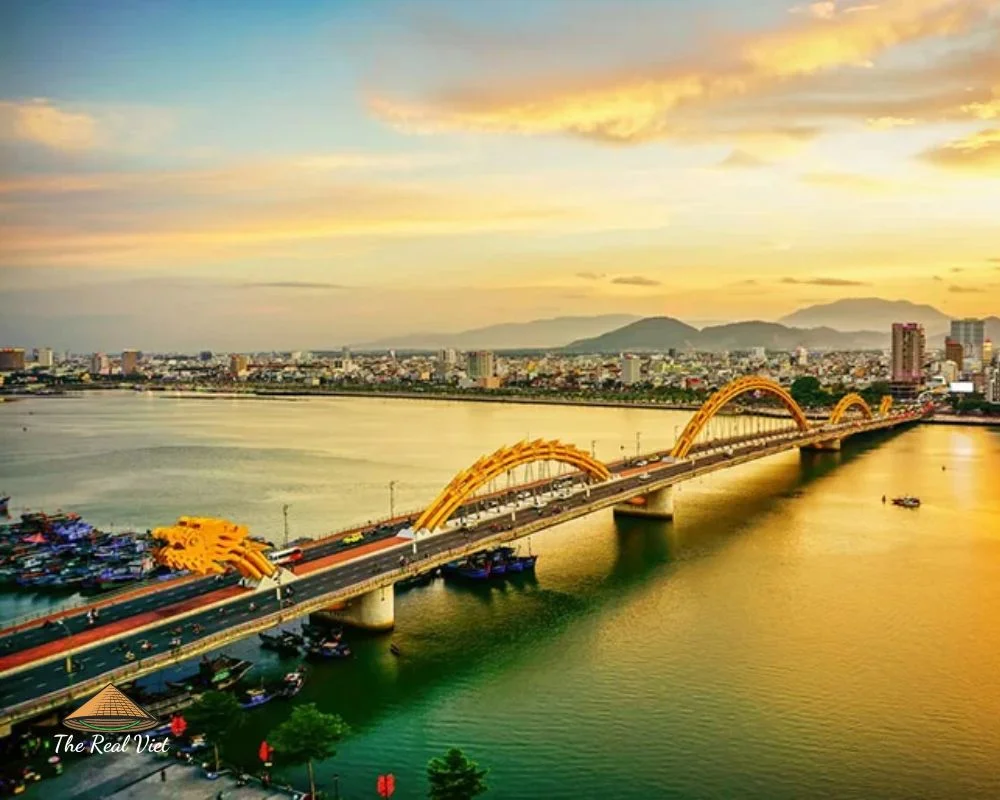
However, during the winter season from December through February, temperatures drop down slightly making it more comfortable for those who prefer cooler weather. Despite these seasonal variations, one thing remains constant – the warm and sunny weather that makes Da Nang an ideal place for outdoor activities all year round.
In our next section, let’s take a look at humidity levels and how they affect everyday life in this bustling city.
Humidity Levels
As we move from average temperatures to humidity levels, it’s important to understand the impact of weather on our daily lives.
The muggy and sticky feeling in da nang indicates that we are experiencing high humidity levels. It feels as if the air is thick with moisture, making it difficult to breathe sometimes. The heat index can be a great risk assessment tool for determining how your body will react when you’re outside.
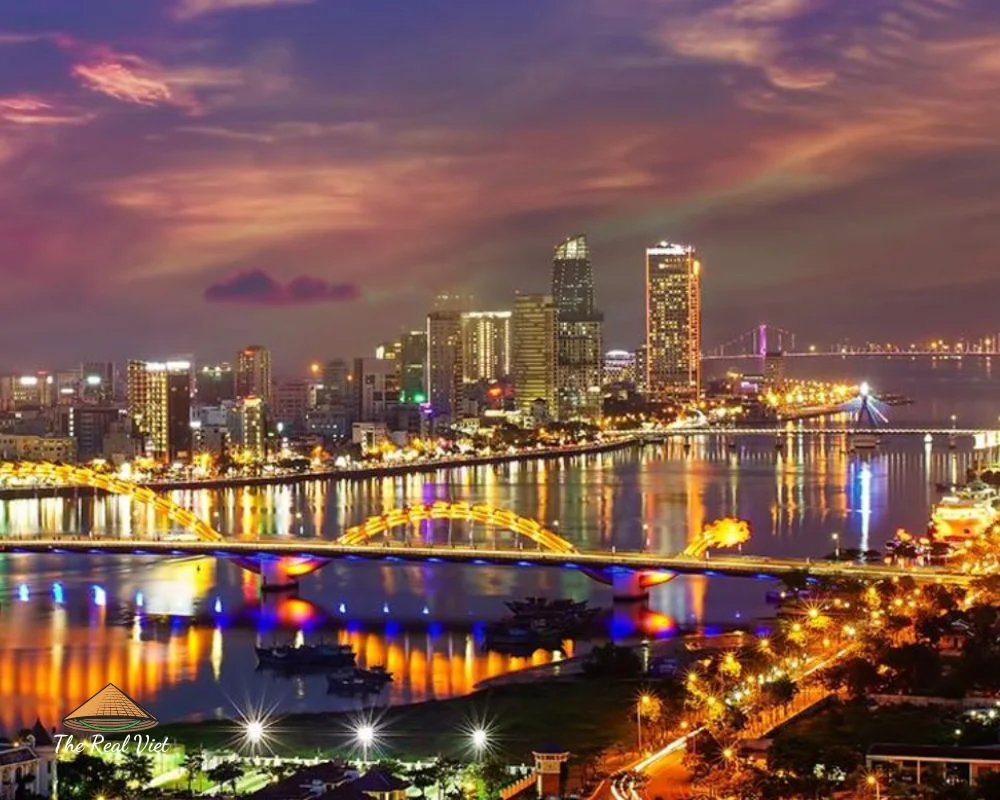
Our team at Da Nang Weather Forecasting understands the importance of staying ahead of weather changes. Our technology enables us to provide accurate predictions about upcoming weather events, allowing residents to prepare accordingly. By monitoring humidity levels and other factors, we can help prevent potentially dangerous situations.
In the next section, we’ll take a closer look at rainfall patterns and what they mean for our city.
Rainfall Patterns
Hey Da Nang, it’s time to talk about the rainfall patterns in our area. Let’s start by looking at the frequency of rainfall and then move on to its intensity.
Rainfall Frequency
Hey there, Da Nang weather enthusiasts! Let’s talk about rainfall patterns in this beautiful coastal city. When it comes to rainfall frequency, Da Nang experiences a monsoon season from September to December, bringing heavy downpours and occasional flooding.

On average, the city receives around 2,000 millimeters of rain per year, with the highest amount occurring during October and November. This poses challenges for flood control measures but also provides much-needed water for agriculture and other industries.
Despite these challenges, Da Nang remains an ideal destination all year round – so don’t let rainy days dampen your spirits!
Rainfall Intensity
Hey there, fellow weather enthusiasts! Now that we’ve talked about the frequency of rainfall in Da Nang, let’s shift our focus to its intensity. As much as this coastal city receives a considerable amount of rain per year, it also experiences scorching heat waves during the dry season from January to August.
With temperatures soaring up to 38°C and humidity levels reaching up to 90%, residents and tourists alike need to take extra precautions against heat-related illnesses. On the other hand, heavy rains during the monsoon season pose flooding risks for low-lying areas.

But fret not – local authorities have been implementing measures such as building new drainage systems and relocating residents living in flood-prone zones to mitigate these hazards. So whether it’s raining cats and dogs or blazing hot outside, Da Nang remains an exciting destination with plenty of activities for those who seek freedom from their daily routines.
Wind Directions
As we continue to monitor the weather here in Da Nang, let’s take a moment to talk about wind directions. The city is located on the coast of Central Vietnam which means that winds tend to be influenced by seasonal variations.
During the summer months, southerly winds prevail while northeasterly winds dominate during winter. Gust speed can also vary depending on the time of year and location within the city.

Coastal areas tend to experience higher gust speeds due to their proximity to the sea while inland areas are generally more sheltered. Residents and visitors alike need to stay aware of these changes in wind direction and speed, especially during typhoon season when strong winds can cause significant damage.
Keep an eye on local weather reports and follow any advisories from authorities to ensure your safety. Now let’s move on to our next topic: sunshine hours!
Sunshine Hours
If you’re looking for a place that’s perfect for soaking up the sun, then Da Nang is worth visiting. This coastal city situated in central Vietnam experiences an abundance of sunshine hours throughout the year. In fact, on average, there are around 8 to 9 hours of daylight during the winter months and about 12 hours during the summer.
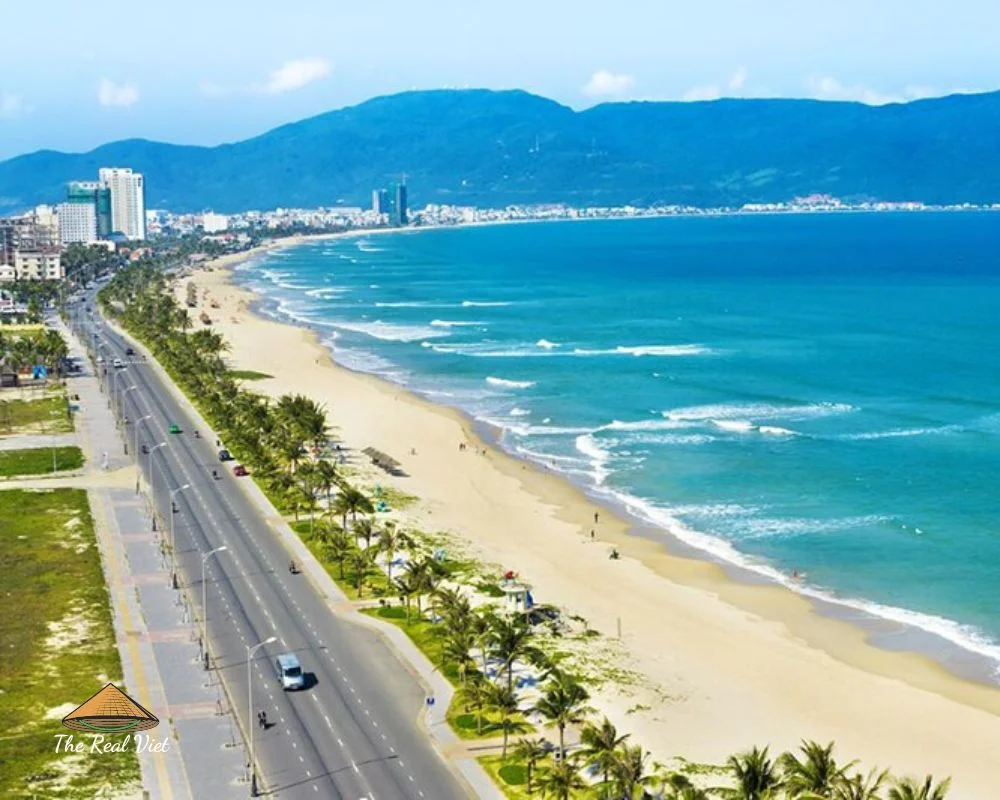
The dawn light over the ocean creates a breathtaking view as it illuminates the white sand beaches. With beach breezes coming off the water, visitors can relax and bask in the warm sun while enjoying amazing views of lush green hillsides.
It’s no wonder why so many tourists flock here every year to escape their everyday routines and enjoy some much-needed freedom under sunny skies.
Climate Zones
As we move into the topic of climate zones, it’s important to note that Da Nang experiences a tropical monsoon climate. This means there are two distinct seasons: the dry season and the rainy season. The coincidence is that both these seasons have their unique charm.
During the dry season, which runs from January to August, temperatures can reach up to 40°C with little rainfall. It’s not uncommon for heat waves to occur during this time, making it essential for locals and tourists alike to stay hydrated and wear loose-fitting clothing.

On the other hand, the wet season (September-December) brings cooler temperatures and heavy rainfall. Despite the occasional downpour, many people prefer visiting Da Nang during this period as they get to witness nature in its full splendor.
Here are four things you might experience while exploring different climate zones in Da Nang:
- Walking along My Khe Beach on a sunny day
- Catching a glimpse of the Marble Mountains during sunrise or sunset
- Feeling the refreshing mist at Linh Ung Pagoda on Ba Na Hills
- Enjoying some local delicacies under a parasol at Han River Bridge
As we continue our exploration of weather patterns in Da Nang, one aspect worth mentioning is air quality. While monsoon season does bring much-needed relief after months of scorching heat, it also results in lower air quality due to increased humidity levels.
In fact, according to recent studies by AirVisual, an independent global air-quality monitoring platform, Vietnam has some of the highest levels of pollution in Southeast Asia. So if you’re planning your trip around this period, make sure to pack appropriate gear such as masks or scarves to protect yourself from any health hazards caused by poor air quality!
Air Quality
As Da Nang continues to grow, so too does its air pollution. The city’s rapid development has caused a sharp increase in harmful pollutants that are released into the atmosphere. This means that ozone levels have also risen, making it difficult for people with respiratory issues to breathe comfortably.
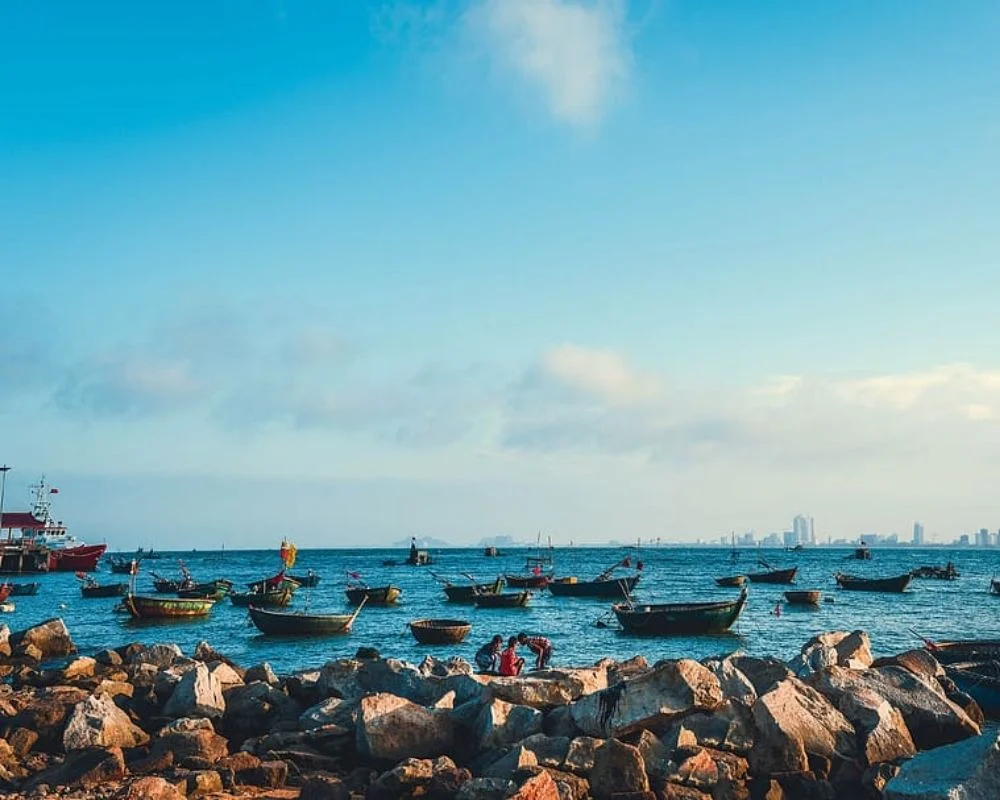
The government is aware of this problem and has been taking steps to combat it. However, there is still much work to be done before we can see any significant improvements in air quality. Individuals living in Da Nang need to take responsibility for their actions as well by reducing their carbon footprint and using public transportation whenever possible.
By working together, we can ensure a cleaner future for our beautiful city.
Speaking of the environment, let’s shift our focus to ocean temperatures…
Ocean Temperatures
As we dive deeper into the ocean temperatures around Da Nang, we’re reminded of the vastness and unpredictability of mother nature. The sea is known to be a symbol of freedom for many, but it’s important to note that with this freedom comes responsibility. Average sea temperatures in Da Nang hover around 27°C (81°F) during the summer months, offering an inviting atmosphere for marine life and tourists alike.

However, as winter approaches, these temperatures can plummet to 20-23°C (68-73°F), making swimming less enjoyable. Despite this slight drop in temperature during certain times of the year, the waters surrounding Da Nang are teeming with diverse marine life all year round. From colorful coral reefs to schools of fish darting through crystal-clear water, there’s something for every underwater enthusiast. For those who prefer staying above ground level yet crave adventure, take part in local fishing tours or hop on a boat ride to spot some playful dolphins dancing in the waves.
With so much beauty waiting just beneath the surface, it’s no wonder why visitors flock here from all over the world seeking their slice of an aquatic paradise.
Best Time To Visit
The weather in Da Nang is generally pleasant, with temperatures ranging from warm to hot throughout the year. Depending on the season, you’ll experience varying levels of humidity, rainfall, and sunlight – making it the perfect destination for outdoor activities, beach-goers, sightseers, and festival-goers alike!
Weather
As we gaze out towards the horizon, it’s evident that Da Nang is a place of natural beauty. However, with its tropical climate comes unpredictable weather patterns. The best time to visit this coastal city is from February to May when temperatures are warm and rainfall is at a minimum. Though snowfall amounts are virtually non-existent in Da Nang, storm preparation is crucial during the monsoon season which typically runs from September to December.

But don’t let that deter you! With proper planning and precautions, visitors can still enjoy all that Da Nang has to offer without fear of inclement weather interrupting their vacation plans.
Temperature
Hey there, fellow travelers!
As we continue to explore the best time to visit Da Nang, let’s talk about temperature. With its tropical climate, it’s no surprise that this coastal city can get quite hot and humid during certain times of the year. A recent heatwave has caused temperatures to soar above average, with the heat index reaching record-breaking numbers.

But don’t worry, there are ways to beat the heat while still enjoying all that Da Nang has to offer. Whether you choose to cool off at one of the many stunning beaches or indulge in some refreshing local cuisine, there’s always an opportunity for adventure in this vibrant city.
So pack your bags and get ready for a memorable trip filled with excitement and freedom!
Outdoor Activities
If you’re looking to enjoy the great outdoors in Da Nang, there are plenty of activities available for you. The weather here is perfect for outdoor activities all year round, so pack your bags and head out to explore!
For a relaxing day out with family or friends, check out one of the many picnicking spots around town. There’s nothing quite like enjoying some delicious food while surrounded by nature.

And if you’re feeling adventurous, why not try your hand at beach sports? With miles of pristine coastline, Da Nang has everything from surfing to beach volleyball to keep you active and entertained.
So get outside and make the most of this beautiful city!
Da Nang Weather Frequently Asked Questions
What Are The Typical Weather Conditions During The Monsoon Season In Da Nang?
Good day! The monsoon season is here and it’s important to know what we’re in for. Humidity levels are going to be high, so prepare yourself by drinking plenty of fluids and wearing lightweight clothing made from breathable fabrics. Wind speeds will pick up as well, so keep an eye out for any loose objects that might get blown away.
It’s a time of change, where the weather can switch between sunny skies and torrential downpours at a moment’s notice.
But don’t let that deter you! Embrace the freedom that comes with being prepared for whatever Mother Nature has in store. Stay safe and enjoy all that Da Nang has to offer during this exciting time!
Is It Common For Da Nang To Experience Typhoons Or Tropical Storms?
Typhoon preparedness and rainy season planning are important considerations for those living in Da Nang, as the city is no stranger to tropical storms. While the typical weather conditions during the monsoon season can bring heavy rainfall and strong winds, it’s not uncommon for typhoons or tropical storms to hit the area.
As a Da Nang weather reporter, I urge residents and visitors alike to stay informed about potential storm activity and take necessary precautions to ensure their safety. Despite these challenges, Da Nang remains a beautiful and vibrant city with plenty of opportunities for adventure – perfect for those who crave freedom while also being mindful of Mother Nature’s power.
Are There Any Unique Weather Phenomena That Occur In Da Nang?
As we look to the skies above Da Nang, there are certainly some unique weather phenomena that occur here.
The humidity levels can often be high, but this is balanced out by the refreshing ocean breeze that blows in from the East Sea. Temperature averages tend to stay warm throughout the year, with an average of around 25-30 degrees Celsius.
For those who seek freedom and adventure, Da Nang offers plenty of opportunities for outdoor activities such as surfing or hiking in the nearby mountains. So whether you’re a resident or just passing through on your travels, take advantage of all that this vibrant city has to offer – even when it comes to its unpredictable weather patterns!
How Does The Weather In Da Nang Compare To Other Cities In Vietnam?
Ladies and gentlemen welcome to your daily weather report. Today we’re talking about how Da Nang’s climate stacks up against the rest of Vietnam. Let me tell you, folks, this city is no stranger to humidity levels that’ll make you break a sweat just stepping outside.
But fear not! Da Nang is also known for its cool ocean breezes that offer some respite from those scorching heat waves. Compared to other cities in Vietnam, Da Nang tends to have a more moderate temperature range throughout the year, making it an ideal destination for travelers who crave adventure and relaxation.
So pack your bags and come on down – there’s plenty of freedom waiting for you here in beautiful Da Nang.
Are There Any Notable Weather-Related Events Or Festivals In Da Nang?
When it comes to weather-related events or festivals, Da Nang offers a unique experience that is hard to come by elsewhere in Vietnam. The city’s annual International Fireworks Festival draws thousands of visitors from around the world who marvel at the spectacular displays set against the backdrop of the Han River.
But while this festival may be a highlight for many, it’s important to note that Da Nang experiences some notable fluctuations in temperature and rainfall patterns throughout the year. As a Da Nang weather reporter, I can tell you that the best time to visit is during the dry season (February-July) when temperatures are warm but not unbearable and rainfall is minimal.
So if you’re looking for an escape from your everyday routine and a chance to let loose, pack your bags and head on over to Da Nang – where there’s always something exciting happening!
Conclusion
So there you have it, folks – the latest updates on Da Nang’s weather patterns. As a proud resident of this beautiful city and an avid observer of its meteorological activity, I can attest to the fact that our climate is as diverse as our culture.
While we do experience some rainy days during monsoon season, it’s nothing too extreme or cause for concern. And while typhoons and tropical storms are possible in Da Nang, they’re not exactly commonplace occurrences.
However, what makes Da Nang truly unique is the occasional phenomenon known locally as ‘Dragon Bridge breathing fire.’ This refers to when the Dragon Bridge – one of our most famous landmarks – spouts out flames during special events.
Overall, compared to other cities in Vietnam, Da Nang has a moderate climate with plenty of sunshine throughout the year. And if you’re looking for a fun way to celebrate our weather (and everything else that makes this city great), be sure to check out the annual International Fireworks Festival!


